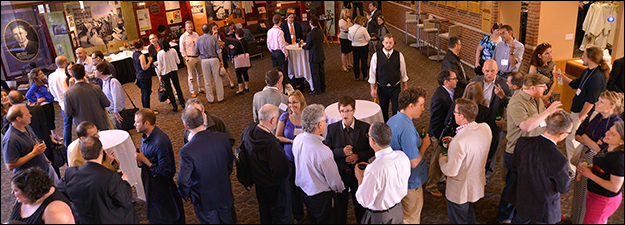Actual and Virtual Reconstructions of the Past
Sponsoring Organization(s)
Special Session
Organizer Name
Virginia Raguin
Organizer Affiliation
College of the Holy Cross
Presider Name
Virginia Raguin
Paper Title 1
"To enlarge and amplify the noble church": Benedictine Visual Culture in the Late Middle Ages
Presenter 1 Name
Anne Heath
Presenter 1 Affiliation
Hope College
Paper Title 2
Digital Recreation of Processional Experiences at Vadstena, Sweden, Motherhouse of the Birgittine Order
Presenter 2 Name
Corine Schleif
Presenter 2 Affiliation
Arizona State Univ.
Paper Title 3
Stained Glass and Meditative Space in Italy: Today and in the Past
Presenter 3 Name
Nancy Thompson
Presenter 3 Affiliation
St. Olaf College
Paper Title 4
"Boats against the Current": Envisioning the Past at Hammond Castle and The Cloisters
Presenter 4 Name
Martha Easton
Presenter 4 Affiliation
Seton Hall Univ.
Start Date
16-5-2015 10:00 AM
Session Location
Schneider 1220
Description
Pre-modern culture prioritized focused space for the achievement of socially interactive ritual. Ritual demanded embodiment via sound, sight, touch, and smell. Virtually all of the visual arts and a considerable amount of the aural found their most valued roles in service to these activities. How do we today capture the actuality of this past, when mass vestments, service books, wall paintings, altar hangings, stained glass, sculpture and painted altarpieces collectively established space and purpose? Museums such as the Cloisters have in the past collected objects within evocative buildings. Today we are facing a public highly receptive to mixed media and interactive thinking; we also have technology that allows more facile visual juxtapositions of disparate objects. The session seeks active discussion from the audience as well as participants to address these contemporary expectations. Virginia C. Raguin, College of the Holy Cross
Actual and Virtual Reconstructions of the Past
Schneider 1220
Pre-modern culture prioritized focused space for the achievement of socially interactive ritual. Ritual demanded embodiment via sound, sight, touch, and smell. Virtually all of the visual arts and a considerable amount of the aural found their most valued roles in service to these activities. How do we today capture the actuality of this past, when mass vestments, service books, wall paintings, altar hangings, stained glass, sculpture and painted altarpieces collectively established space and purpose? Museums such as the Cloisters have in the past collected objects within evocative buildings. Today we are facing a public highly receptive to mixed media and interactive thinking; we also have technology that allows more facile visual juxtapositions of disparate objects. The session seeks active discussion from the audience as well as participants to address these contemporary expectations. Virginia C. Raguin, College of the Holy Cross

